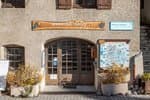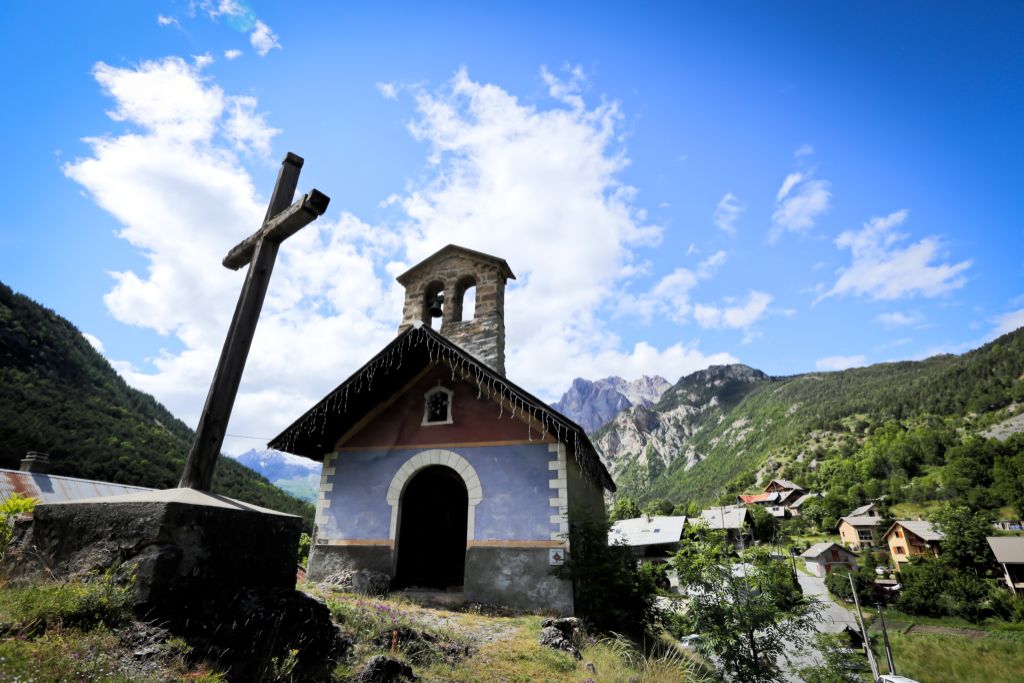
Around Les Vigneaux and Grand Parcher
Standing on an alluvial cone, like numerous villages in the valley, the hamlet of Le Grand Parcher is a little haven of peace. Take the time to stop and admire its little chapel, with the communal oven alongside it. You can also enjoy the fresh, calm atmosphere when you make a short stop at the water fountain of La Ruinette.
Description
Waysigning: one green dot and one white dot
At the far end of the village, take the level path leading off towards the village of Les Vigneaux.
- After the cemetery in Les Vigneaux, cross the Briançon road (take care, busy road) and take a narrow road on the right heading towards the centre of Les Vigneaux village.
- After the church, as you head towards the communal oven, take a path leading from the back of a small car park. A little further on this joins a road. Cross the bridge over the mountain stream Le Rif, turn right and then left and continue straight ahead until you come to the district of Rif Cros.
- Take the path for Les Parchers.
- In Grand Parcher, go down a narrow road until you come to the D944E. Cross the road. Cross the Gyronde and after the bridge take the track on the left leading towards a campsite, the Camping des Vaudois. At the campsite, head towards the small lake and take a path which leads into a small wood.
- Cross the road leading uphill to Puy Saint-Vincent and take the narrow road opposite which is the access to the Camping des Vaudois. It runs along and above the right-hand bank of the river. Follow this as far as the Camping des Vaudois and continue straight on until you come to a bridge, the Pont du Grand Pré. After the bridge, take a narrow road leading up towards La Bâtie des Vigneaux.
- Departure : La Bâtie des Vigneaux
- Arrival : La Bâtie des Vigneaux
- Towns crossed : Les Vigneaux and Vallouise-Pelvoux
Altimetric profile
Recommandations
Take care when crossing the D994E below Les Vigneaux and Grand Parcher.
There are several recommended starting points:
- La Bâtie des Vigneaux
- The bridge over the Gyronde in Grand Parcher
- Le Pont du Rif in Les Vigneaux
This route can be split into two loops:
- Loop 1 Les Vigneaux:
After crossing the mountain stream Le Rif, turn left and head downhill until you come to the D994E Cross the road, go across the bridge and then turn left just at the other side of the bridge towards the Camping des Vaudois (waysigning: green and white dot, "Boucle 1 des Vigneaux").
- Loop 2 Between Parapin and Gyronde:
Starting from the bridge over the Gyronde in Grand Parcher:
(waysigning: green and white dot, "Boucle 2 Entre Parapin et Gyronde"). Pass over the Gyronde and on the other side of the bridge take the track on the left leading towards the Camping du Courounba. After the campsite, continue straight ahead until you come to the Pont du Rif. At the Pont du Rif (you can also start the route here), go across the bridge, cross the D994E, go past the bakery and take a narrow road leading off to the left just before the bridge over the Rif. This leads up to the top of the village. Further up, follow the right-hand bank of the mountain stream for a short distance and then turn left and continue straight on until you come to the district of Rif Cros. Take the path leading to Les Parchers.
Check weather conditions before setting off.
Rescue services contact details: Secours Montagne (Mountain Rescue): +33 (0)4 92 22 22 22 or 112
Show consideration for the work of farmers, livestock keepers and owners
Close all gates behind you
Take your litter home
Do not take shortcuts across pastureland
Information desks
Place de l'Eglise, 05340 Vallouise
Vallouise Park house
, 05290 Vallouise
Information, documentation, models, exhibitions, screenings, product sales and works of the Park. Guided tours for school, reservation required. The new Park House opened in Vallouise since June 1, and offers visitors an interactive permanent exhibition inviting to explore the area and its heritage. A temporary exhibition space will allow a renewed offer. Finally, the device is completed by an audiovisual room to organize screenings and conferences Free admission. All animations of the Park are free unless otherwise stated.
Transport
Public transport >> www.pacamobilite.fr
Consider car-sharing >> www.blablacar.fr
For more information, ask at the Tourist Information Office nearest to the trail starting point.
Access and parking
2.2 km from L'Argentière-La Bessée, take the D994E.
Parking :
Sensitive areas
Short-toed snake eagle
- Impacted practices:
- Aerial,
- Sensitivity periods:
- MarAprMayJunJulAugSep
- Contact:
- Parc National des Écrins
Julien Charron
julien.charron@ecrins-parcnational.fr
Short-toed snake eagle
- Impacted practices:
- Aerial,
- Sensitivity periods:
- MarAprMayJunJulAugSep
- Contact:
- Parc National des Écrins
Julien Charron
julien.charron@ecrins-parcnational.fr
13 points of interest
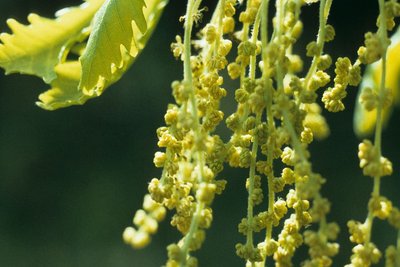
Le chêne pubescent - Parc national des Écrins  Flora
FloraThe downy oak
In the wood, downy oaks grow alongside Scots pines. . It is a small oak tree with marescent leaves: they dry out in the autumn but remain on the tree all winter. It is called "downy" because the young branches, buds and sometimes the undersides of its leaves are covered in a fine down. Forests of Scots pine and downy oak are typical of the warm, south-facing mountain slopes in intra-alpine valleys.
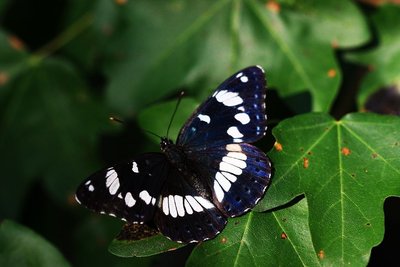
Sylvain azuré - Damien Combrisson - Parc national des Écrins  Fauna
FaunaThe admiral butterflies
You might be lucky enough to spot the white admiral and the southern white admiral, butterflies with dark wing uppers intersected by a white strip and with an orangey-fawn underside. They are difficult to spot as they use their colouring and the shadows under the trees to blend into the background. They are both very shy. These two species are very similar; the females, unusually, lay their eggs on honeysuckles.
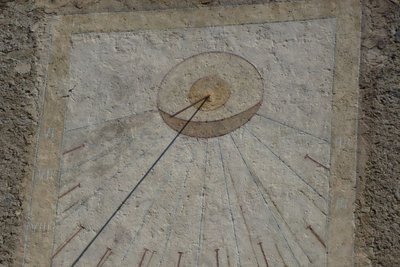
Cadran solaire de l'église des Vigneaux - Office de tourisme Pays des Écrins  Vernacular heritage
Vernacular heritageThe sundial
The sundial is an eighteenth-century tradition widespread across the Southern Alps where the sun is ever-present. Artisan sundial makers produced these sundials, which were added as a decoration to house fronts, religious buildings or, as here, a tower. The sayings inscribed on them make some of these artistic works philosophical as well as decorative.
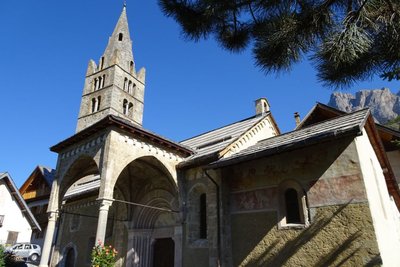
L'église des Vigneaux - Office de tourisme Pays des Écrins  Vernacular heritage
Vernacular heritageThe church in Les Vigneaux
The church of Saint-Laurent with its elegant porch dates from the fifteenth and sixteenth centuries. On its south wall there are frescoes depicting the vices, dragged towards hell by a demon, and their punishments. Enough to make you shudder! Its Lombard Romanesque bell tower has a very rare one-handed clock dating from the eighteenth century. It is one of the oldest working clocks of its type.
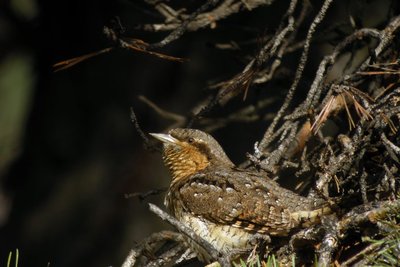
Le torcol - Damien Combrisson - Parc national des Écrins  Fauna
FaunaThe northern wryneck
In the spring, an odd song can be heard among the old trees in the orchard, a loud song similar to that of the green woodpecker, only slower. It is that of the northern wryneck. This bird owes its name to the extreme way it extends and twists its neck when it feels threatened. Its French name torcol fourmilier is a reference to the fact that it feeds on ants (fourmils in French). Difficult to spot because its plumage merges into the colour of the tree trunks, it gives its presence away by its song when it returns from its migration.
Le four banal du Grand Parcher - Office de tourisme Pays des Écrins  Vernacular heritage
Vernacular heritageThe hamlet of Parcher
The hamlet of Grand Parcher stands on the alluvial cone formed by the Grand Parcher mountain stream, and on either side of it. It is made up of several old houses and the seventeenth-century chapel of Saint-André. It has two sun dials painted onto its walls. One of them bears the saying HORA INCERTA CUNTIS, ULTIMA MULTIS (This hour is uncertain for all, it is the last hour for many). Food for thought!
La Gyronde - Office de tourisme Pays des Écrins  Water
WaterThne Gyronde
No, we're not in south-west France where the Gironde flows! The Gyronde (spelt with a «y»!) is the river that flows between Vallouise and L'Argentière-La Bessée, where it flows into the Durance. It originates from the Gyr and Onde mountain streams which merge in Vallouise.
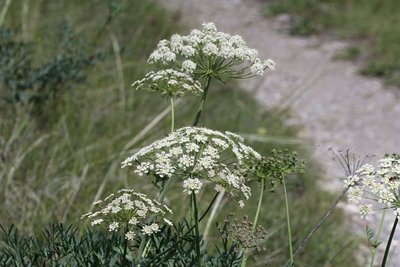
Le laser siler - Cédric Dentan - Parc national des Écrins  Flora
FloraThe laserwort
After the bridge, a large plant with flowers arranged in umbels (in other words, an umbellifer) clings to a small rock bar to the right of the track, the laserwort. This plant belongs to the family Apiaceae, which used to be called umbellifers, and grows in dry areas. It has a distinctive feature: in autumn, the basal part of the stem breaks of its own accord and the entire plant, now dry, sets off rolling down the hillside like a large ball, or is blown by the wind.

L'ubac - Office de tourisme du Pays des Écrins  Geology and geography
Geology and geographyThe "ubac"
The track rises gently up the right-hand bank of the Gyronde, on the "ubac" side. The "ubac" is the slope that is exposed to the north, so it is in shadow in winter when the sun is low in the sky.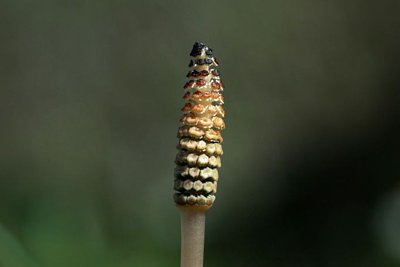
La prêle des champs - Cédric Dentan - Parc national des Écrins  Flora
FloraThe field horsetail
At the bottom of a water fountain, on the edge of a ditch a plant grows which resembles a large bottle brush... or a horse's tail, depending on your imagination. It's the field horsetail, a plant related to ferns. It is known for its medicinal properties because it is rich in silica, a powerful remineraliser for the bones, cartilage and skin. There are several species of horsetail.
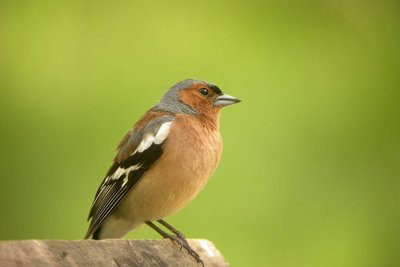
Le pinson des arbres - Damien Combrisson - Parc national des Écrins  Fauna
FaunaThe chaffinch
A very common bird, the chaffinch lives in forests as well as villages. The male is in shades of pink, with a blue-grey cap; the female is duller, in shades of greenish grey. It is a rather gregarious bird, except in the breeding season, and the birds often communicate with one another by their « pink, pink » calls. It is partially migratory. The populations from Northern Europe come to spend the winter in France and other temperate countries.
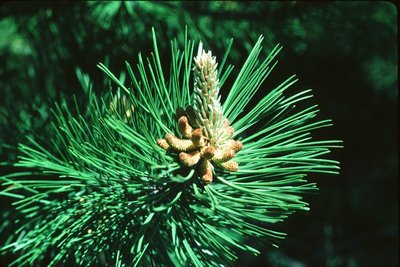
Le pin sylvestre - Parc national des Écrins  Flora
FloraThe Scots pine
On the edge of the track, there is a large stand of Scots pines. This softwood tree can be identified by the beautiful salmon colour of its branches and the upper part of its trunk. Its short bluish-green needles are grouped in pairs. Capable of withstanding both low temperatures and summer droughts, it is perfectly adapted to the semi-continental climate of intra-alpine valleys.
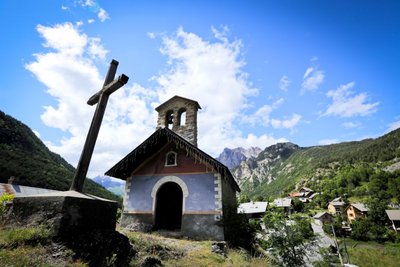
La Bâtie des Vigneaux - Jan Novak Photography  Vernacular heritage
Vernacular heritageLa Bâtie des Vigneaux
This hamlet owes its name to an old fortified house, no longer in existence, owned by the lords of La Bâtie. The colourful little chapel is dedicated to Saint Claudius.
Source

Report a problem or an error
If you have found an error on this page or if you have noticed any problems during your hike, please report them to us here:

